MXA RACE TEST: THE REAL TEST OF THE 2022 YAMAHA YZ250F
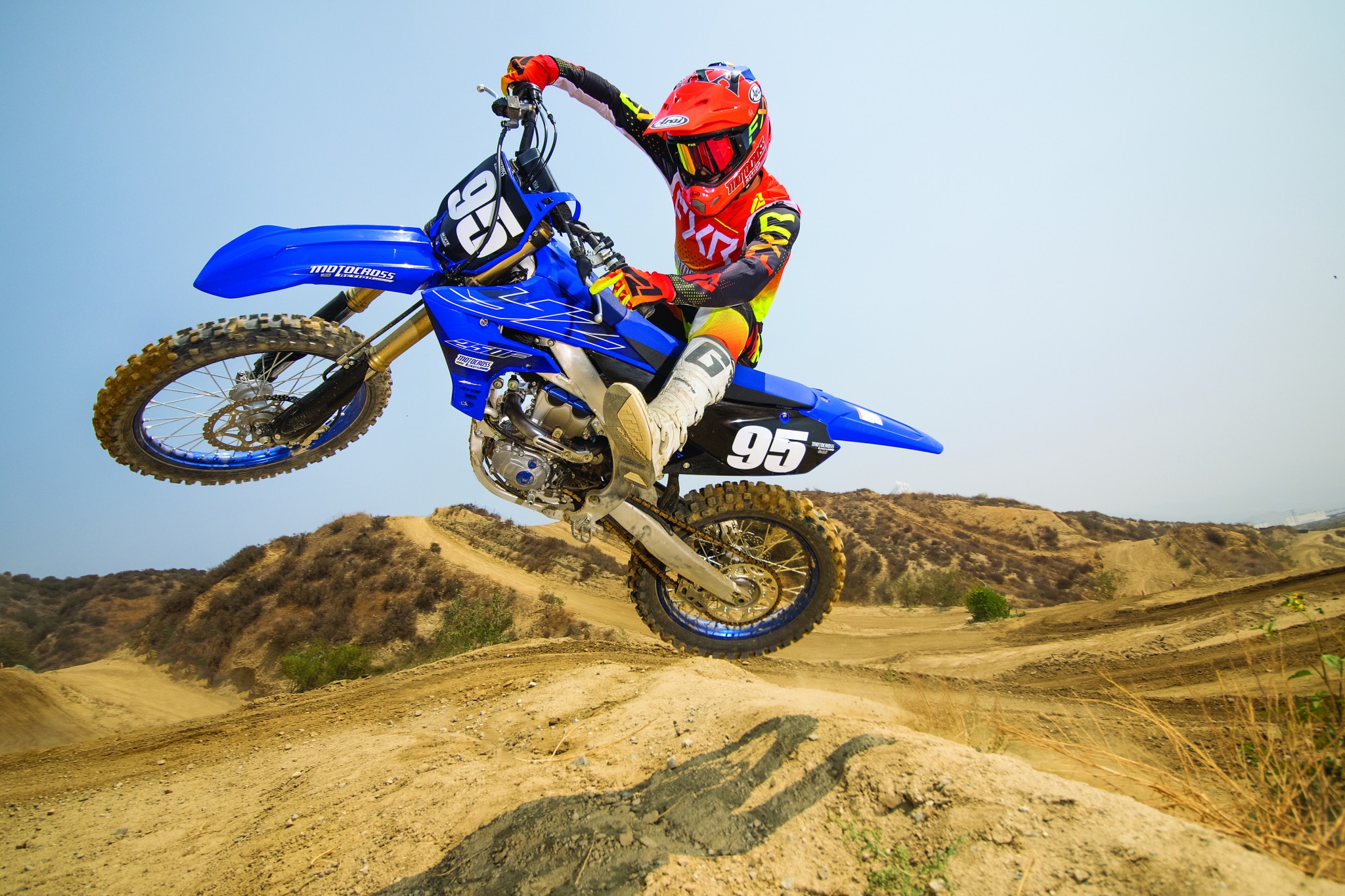 THE GEAR: Jersey: FXR Helium, Pants: FXR Helium, Helmet: Arai VX-Pro4, Goggles: FXR Combat MX, Boots: Gaerne SG12.
THE GEAR: Jersey: FXR Helium, Pants: FXR Helium, Helmet: Arai VX-Pro4, Goggles: FXR Combat MX, Boots: Gaerne SG12.
Q: FIRST AND FOREMOST, IS THE 2022 YAMAHA YZ250F BETTER THAN THE 2021 YZ250F?
A: Yamaha made many updates to the YZ250F powerplant in 2021, so we weren’t expecting any big changes for 2022. Yamaha obviously agreed, but they did make some refinements to the rear wheel and suspension to improve the balance of the bike and increase rear-wheel traction.
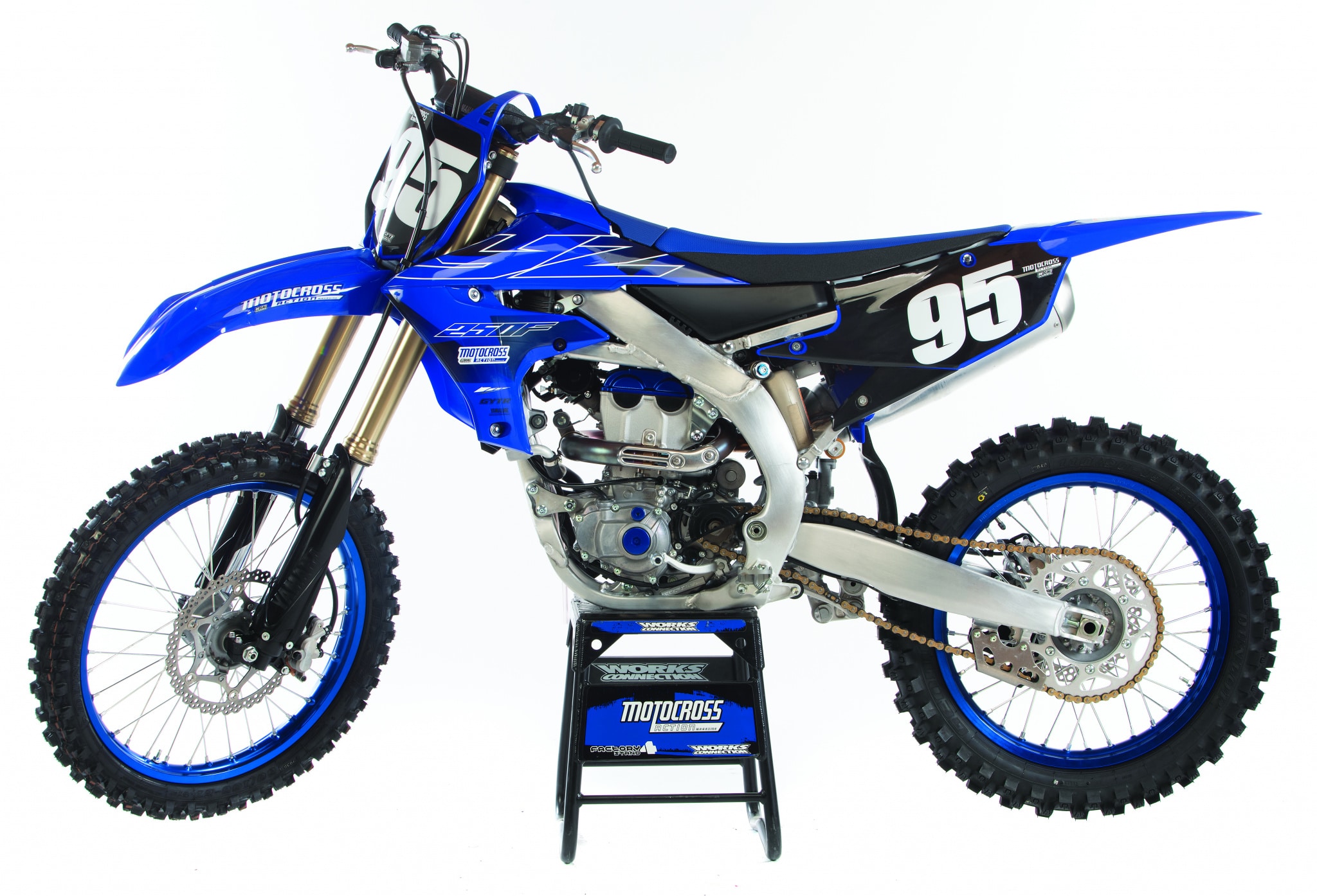 The 2022 YZ250F is a bike that inspires confidence.
The 2022 YZ250F is a bike that inspires confidence.
Q: WHAT DID YAMAHA UPDATE ON THE 2022 YZ250F?
A: For 2022, Yamaha focused its attention on the rear wheel and some modest updates to valving in the suspension department. Here is what they did.
(1) Hub. Yamaha lightened up the rear hub by 28 grams to reduce unsprung weight and was also able to strengthen the sprocket flanges on the hub by changing its shape. It should be noted that 28 grams equals 1 ounce.
(2) Spokes. The spoke lacing pattern was changed from a cross-2 pattern to a cross-3 pattern. A cross-3 spoke pattern gets its name from how many other spokes a spoke crosses from the hub to the rim. It is also laced at a more laid-down angle, which allows it to absorb higher loads and produce a much stronger wheel. This in turn affects the way the rear wheel tracks to the ground. Cross-3 spokes come with a weight penalty because they are longer—and 36 longer steel spokes will erase some of Yamaha’s weight savings calculations.
(3) Sprocket. The 50-tooth rear sprocket was lightened up by 42 grams.
(4) Chain. The D.I.D chain was updated to be stronger while also losing 73 grams.
(5) Rear rim. The previous 1.85 rear rim has been widened to be the same as the 2.15 rear rim on the YZ450F.
(6) Tires. Bridgestone X20 tires were swapped out for Dunlop MX33 tires. The rear tire went to 110/90-19 from a narrower 100/90-19.
(7) Forks. Yamaha increased low-speed damping on the already stellar Kayaba SSS forks.
Q: HOW FAST IS THE 2022 YZ250F POWERPLANT ON THE DYNO?
A: Out of its six competitors, the 2022 Yamaha YZ250F ranks second to last in torque and fourth in peak horsepower. On paper, this slots the YZ250F into the lower half of the charts. With Yamaha being known for its low-to-mid style of power, it is hard to prove that on paper when the KTM and Husqvarna, which are known for their top-end power, beat out the YZ250F off the crack of the throttle to 6000 rpm. They then go neck and neck from 6200 to 6800 rpm. After that, the Austrian brothers pull away to 10,800 rpm, where they reconnect for a short time. The Austrian trio (KTM, Husky, GasGas) are also one, two and three in torque numbers in comparison to the YZ250F, which comes in next to last to the dated Suzuki RM-Z250.
Are we trying to make the YZ250F look bad? No. These are the facts; however, the fact is all the bikes, save for the RM-Z250, are close on paper. To put it into perspective, the 2022 CRF250 offers less torque and horsepower on the dyno than its 2021 CRF250 predecessor but is a much better engine package when on the dirt dyno.
Q: HOW FAST DOES THE YZ250F FEEL ON THE TRACK?
A: In 2021, the YZ250F was the most exciting bike to ride. In 2022, the CRF250 offers a similar feeling with its updated engine package. What we mean by “exciting” is that you feel the power instantly when you turn the throttle. It pulls hard and assertively into the upper half of the low end on through the midrange. It is a dose of dopamine to your medulla oblongata.
MXA test riders love this power because they feel it, but after some time on the YZ250F, riders tend to want to smooth out the power. In slow corners, especially ruts, the bold power is hard to control. You have to be very precise with the throttle or you get a herky-jerky sensation. Test riders don’t like this. Some say that the herky-jerky sensation is due to the YZ250F being too powerful down low, but we think it is a hesitation at the crack of the throttle causing the feeling. If the power off the crack of the throttle were more connected or more linear, that feeling wouldn’t exist. We have smoothed out this sensation by altering the mapping, but testers still feel it.
Once you are out of a corner and you start to roll on the power, you will be met by the YZ250F power surge. This surge is fast, so you need to make sure your left foot is ready to shift before the engine runs out of steam.
If there is a load on the engine, such as going up a hill, you will feel the power of the engine start to flatten out. For 1000 rpm, from 8700 to 9700, the YZ250F power curve dips below all of its competition, save for the yellow machine. This dip leaves the power feeling lackluster when powering up big hills or in deep sand.
It is a really good engine; however, it feels better than it is. When racers jump on, it may feel better due to the sense of excitement, but that excitement goes away once the KTM 250SXF, KX250F, FC250 and CRF250 pass you on fast straights.
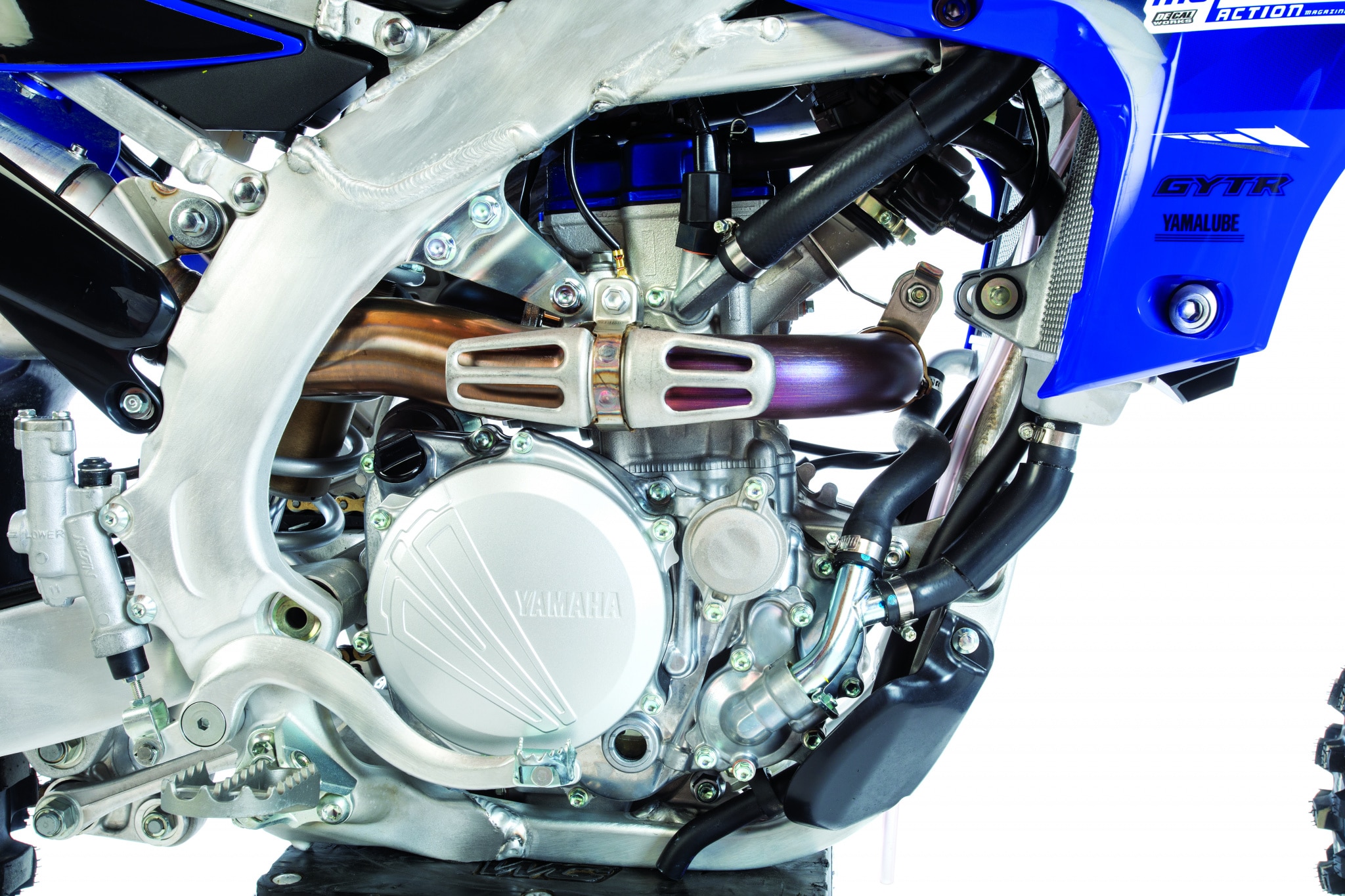 The YZ250F’s explosive hit puts a smile on your face.
The YZ250F’s explosive hit puts a smile on your face.
Q: WHY IS IT SO IMPORTANT TO LEARN TO USE THE YAMAHA MAPPING TOOL?
A: If you don’t learn how to use the Yamaha’s Power Tuner app, you will never get any use out of the dual-mode map switch on the left side of the bars. The YZ250F map switch has the same map in both the stock setting (light off) and the blue light setting. We don’t necessarily like this. We want Yamaha to put in the stock map (light off) and their best Power Tuner map in the blue light setting. All the other bikes with map switches come with two or three preprogrammed maps that can be accessed by the push of a button—the Yamaha comes with two identical maps, but they are both stock. We understand Yamaha’s side of this stupid map setup. They spent a lot of time and money on the development of their Power Tuner app, and they want to force YZ250F owners to use the app, whether they want to or not. The question is, why don’t buyers want to use the app?
MXA really likes the Power Tuner Wi-Fi app, but people are approaching computer app burnout. They don’t want to go through another learning curve to access something that Yamaha should have given them in the first place. An amazing number of Power Tuner app users just have a computer savvy friend map it for them. Our advice is to take the time to learn how to use it yourself, because the maps make a difference, especially the one we include in this test.
Be forewarned that once you download the app, you will need to connect it to your smartphone’s Wi-Fi, as the YZ250F has its own signal. Once you press “connect,” it will ask for a password. You will find your YZ250Fs password by removing the left side panel and pulling out the Wi-Fi box to see the password under the S/N number. Once you do that, your bike should pop up in the app. From here, select the map you want to try. To put MXA’s map in, go to the Map List page and select the plus sign in the upper right-hand corner. You will then select the new map and add in the fuel and ignition number sequence as shown. After you complete this step, press the up arrow in the upper right-hand corner to send the map to your bike. Now that we read the instructions, it does seem harder than necessary.
Q: HOW DOES THE YZ250F HANDLE?
A: You could argue that the 2022 YZ250F is the best-handling bike on the market, but we think is it the best handling bike for lazy or lower-level riders. Why? Because it is slow to register the inputs you give it, which makes it very predictable and helps minimize mistakes. In motion, the YZ250F doesn’t turn the sharpest or maneuver the quickest, which in a weird way is one of its strengths. A KTM 250SXF is very sensitive to input from the rider and requires sharp reflexes and total concentration to stay on top of it. It takes less effort to ride the YZ250F than the KTM 250SXF; however, the Austrian steed can do things that the YZ250F can’t. The question is, which kind of handling suits you the best?
The rear of the YZ250F is sometimes more rigid than we want. We liked the comfort of the increased flex on the 2020 YZ250F chassis; however, it was a give-and-take scenario. The new generation YZ250Fs are better race machines. Most fast motocross racers want a quick, precise and agile chassis—and that requires a stiffer frame, especially in the swingarm pivot area. If you aren’t fast, don’t stand all the time, or forget to weight the outside peg, the rear end of the Yamaha YZ250F becomes shock sensitive. And thanks to the Kayaba shock’s ability to absorb anything in its path, the 2022 YZ250F handles amazingly well. The rear end sticks to the ground like glue.
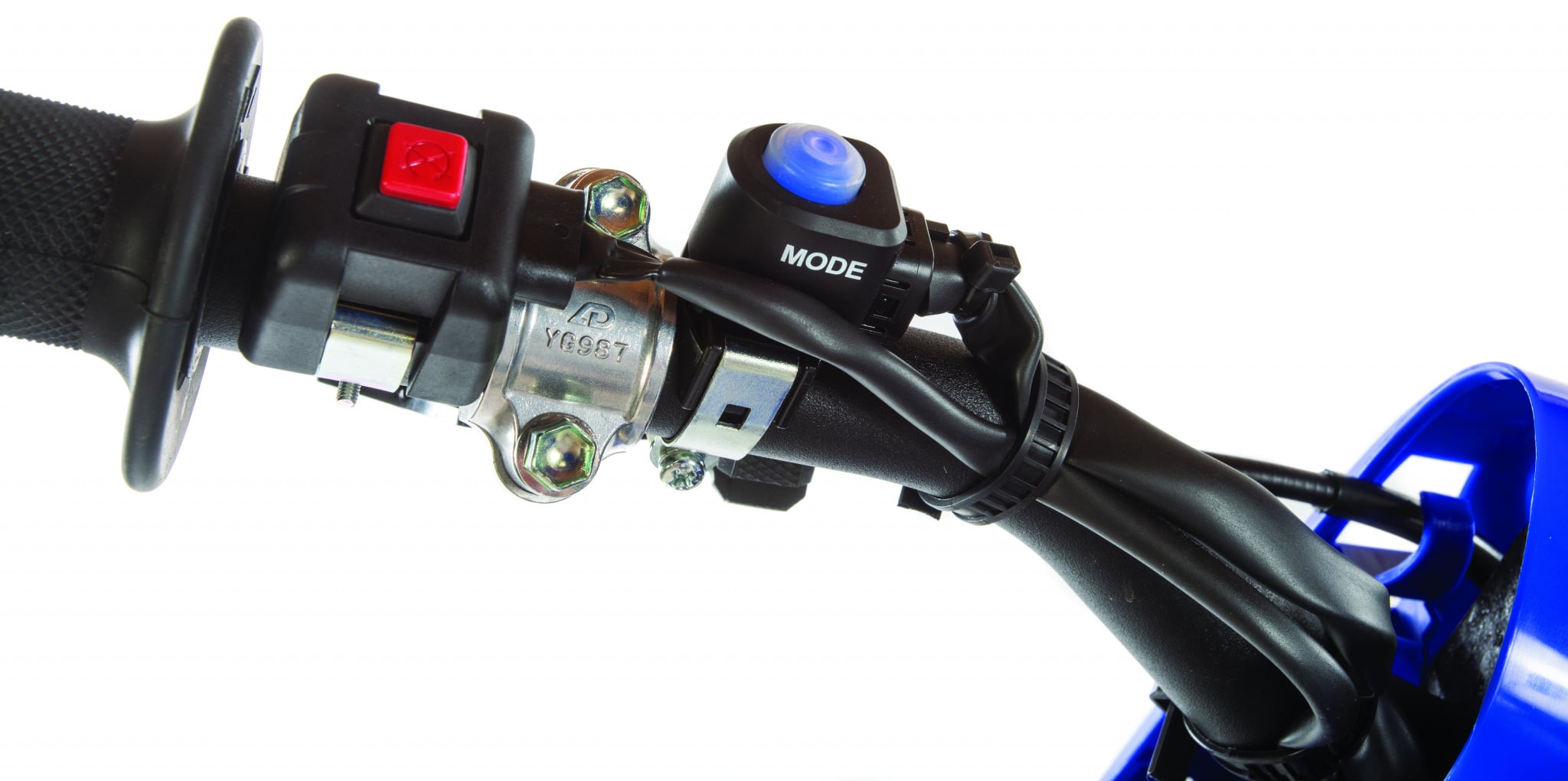 Having the ability to change maps from your phone is cool.
Having the ability to change maps from your phone is cool.
Q: WHAT DO WE THINK OF THE ERGONOMICS?
A: “Odd,” “weird,” “strange” and “awkward” are a few ways to describe them. Of course, if you have only ever ridden Yamahas and stay off of Hondas, KTMs, Huskys and GasGas, you won’t know any better. We aren’t saying the ergos are bad, just that it takes time to get used to where everything is.
Q: IS THE KAYABA SUSPENSION STILL GREAT?
A: The Kayaba SSS forks and shock do many things very well and very few things mediocre, but across the board, the YZ250F is easy to get balanced and the suspension will be in the ballpark for just about any rider with only a few clicks. The setup is dummy-proof, making the YZ250F one of the easier bikes to get on and feel comfortable after you get used to the ergos.
We developed these fuel and ignition maps below to be smoother and broader.
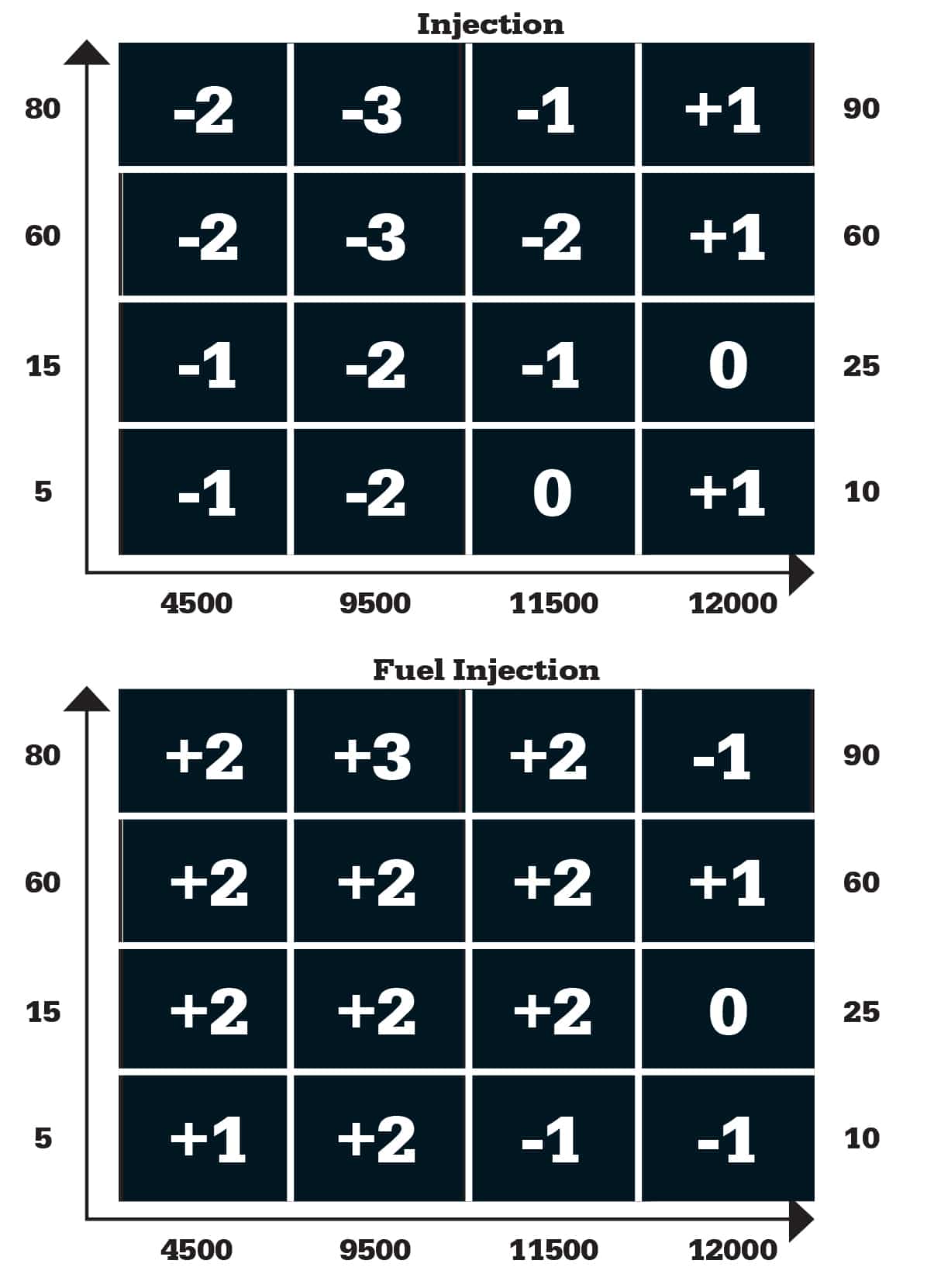
We developed these fuel and ignition maps below to make the 2022 YZ250 feel more like the 2022 TZ250F.
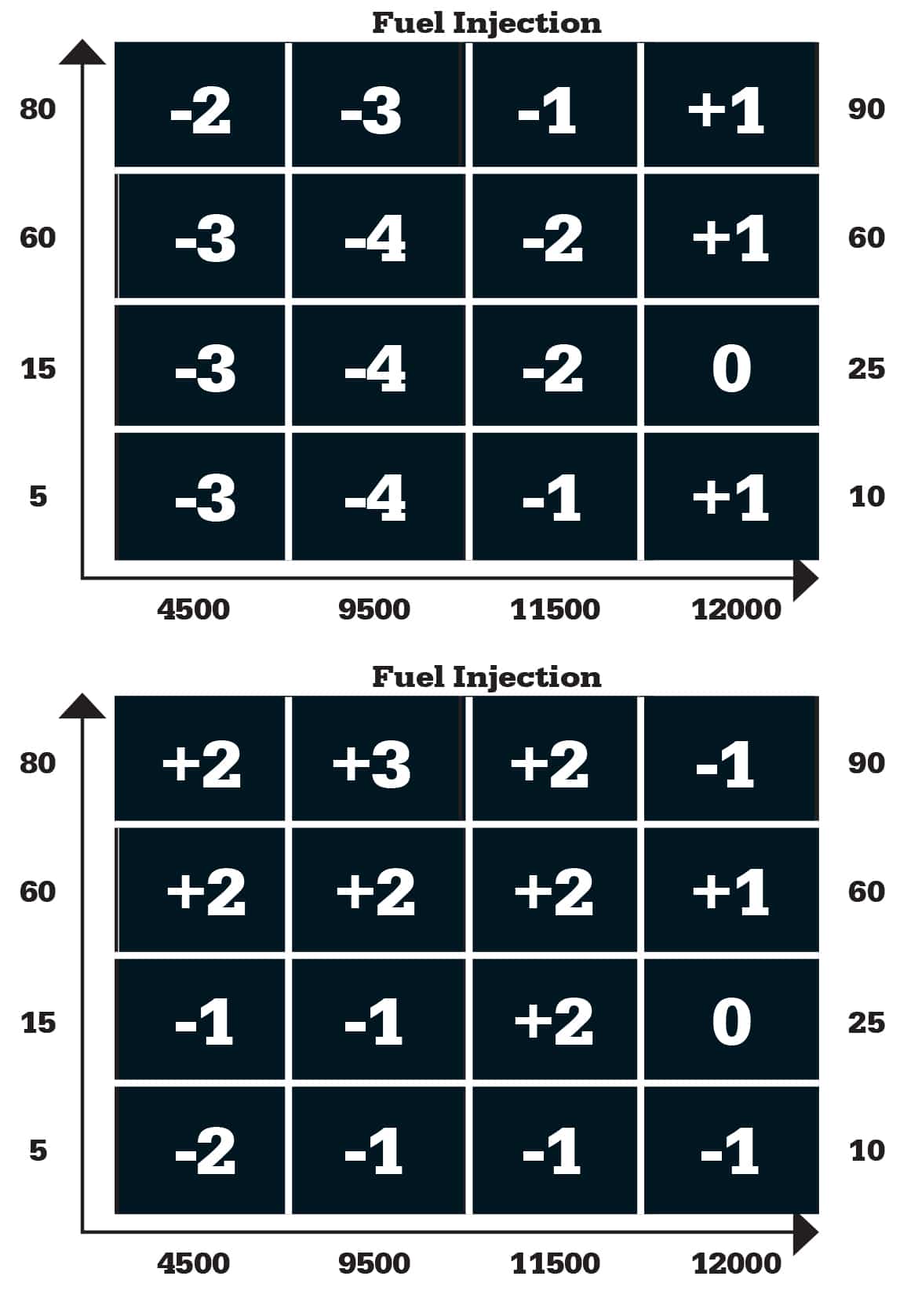
Q: WHAT DID WE HATE?
A: The hate list:
(1) Rear fender. Either the bike is too heavy or the rear fender needs to be beefed-up, because when you lift the fender to put the bike on the stand, it feels as if it is going to break off.
(2) Weight. The YZ250F is 10 pounds heavier than the lightest bike in the class, the GasGas MC 250F.
(3) Width. The bike is bulky and wide. Testers don’t mind it until they jump on another brand.
(4) Top end. The midrange grunt of the YZ250F is great, but the green, white and orange bikes blow right past it down the straightaways.
(5) Clutch. A lot of riders still like the feel of the cable clutch but seem to forget about adjusting the cable play in time to save the clutch. Yamaha should get with the times and spec a hydraulic clutch. Why haven’t they done it already? It would add weight, and they can’t afford to get any heavier.
(6) Compression clickers. It is almost impossible to turn the compression clickers without stripping the adjustment screw. There is no room between the bars and the fork cap.
(7) Maps. Yamaha offers two preprogrammed maps, but they are both the same map.
(8) Airbox. Yamaha will sell you a GYTR Air Flow kit that breathes better than the stock air filter design for $149.95. If they know how to fix the stocker, why doesn’t this kit come stock?
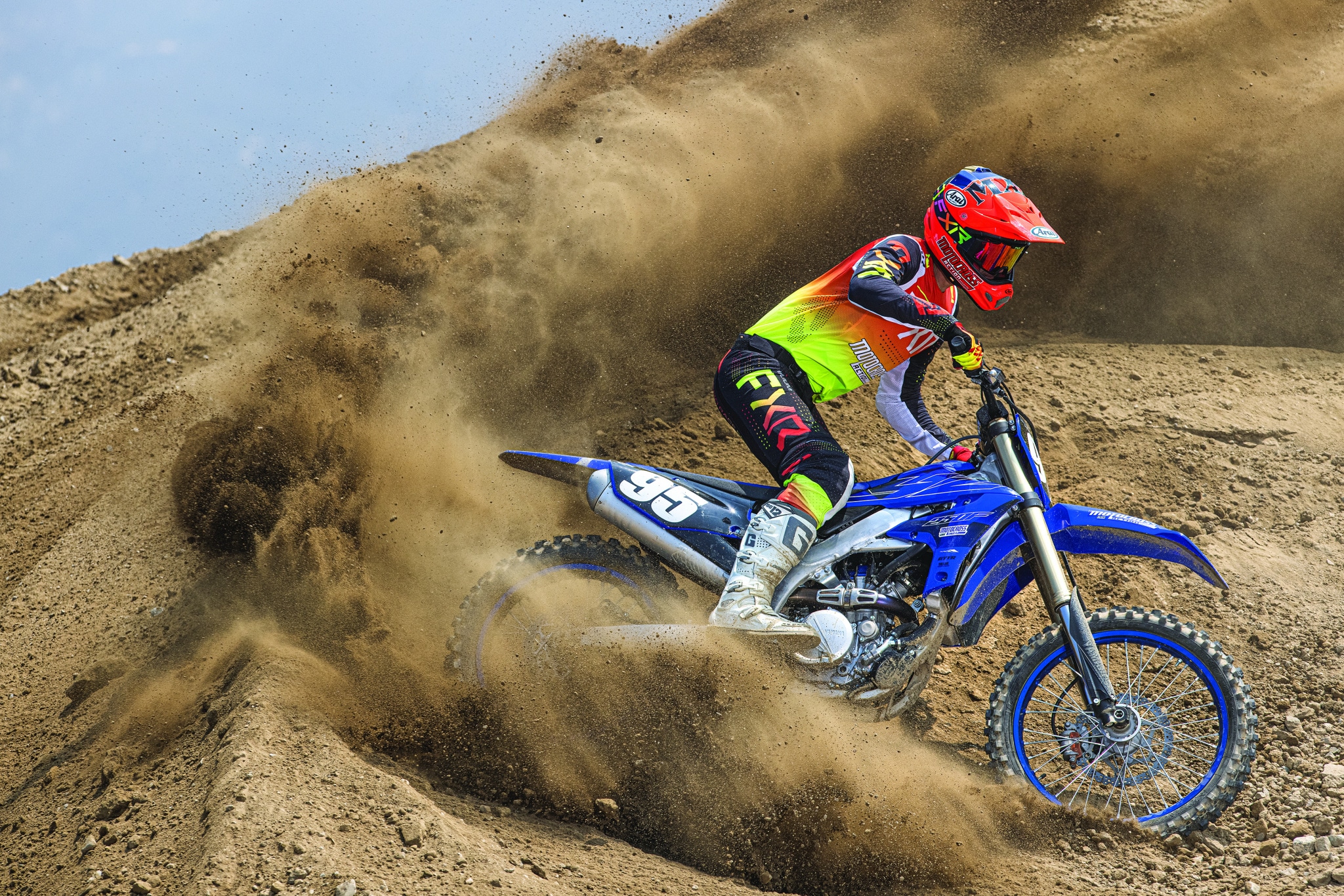
Q: WHAT DID WE LIKE?
A: The like list:
(1) Suspension. The Kayaba suspension offers great balance and comfort.
(2) Brakes. The more rigid and more powerful front brake has less fade and offers a better feel at the lever than before.
(3) Wi-Fi. Tuning the power curve with the Yamaha Power Tuner app is awesome, even with the learning curve.
(4) Tires. Yamaha switched from Bridgestone to Dunlop in 2022.
(5) Traction. The front and rear wheels stick to the ground when you want them to.
(6) Durability. Yamaha beefed up the transmission in 2021 to handle the added power.
Q: WHAT DO WE REALLY THINK?
A: The YZ250F is a strange bike, and it has been since 2014. On the other side of the coin, there have been years when it was a really good bike and won MXA 250 shootouts. Most test riders love riding this bike, but when quizzed about what they like, they only mention the potent low-to-mid powerband and the excellent Kayaba suspension. There is no doubt that those two features are the highlights of the 2022 YZ250F—and if you like the power and the suspension on a bike, you are more than halfway home to feeling confident about racing it. And confidence is such a huge step to going fast.
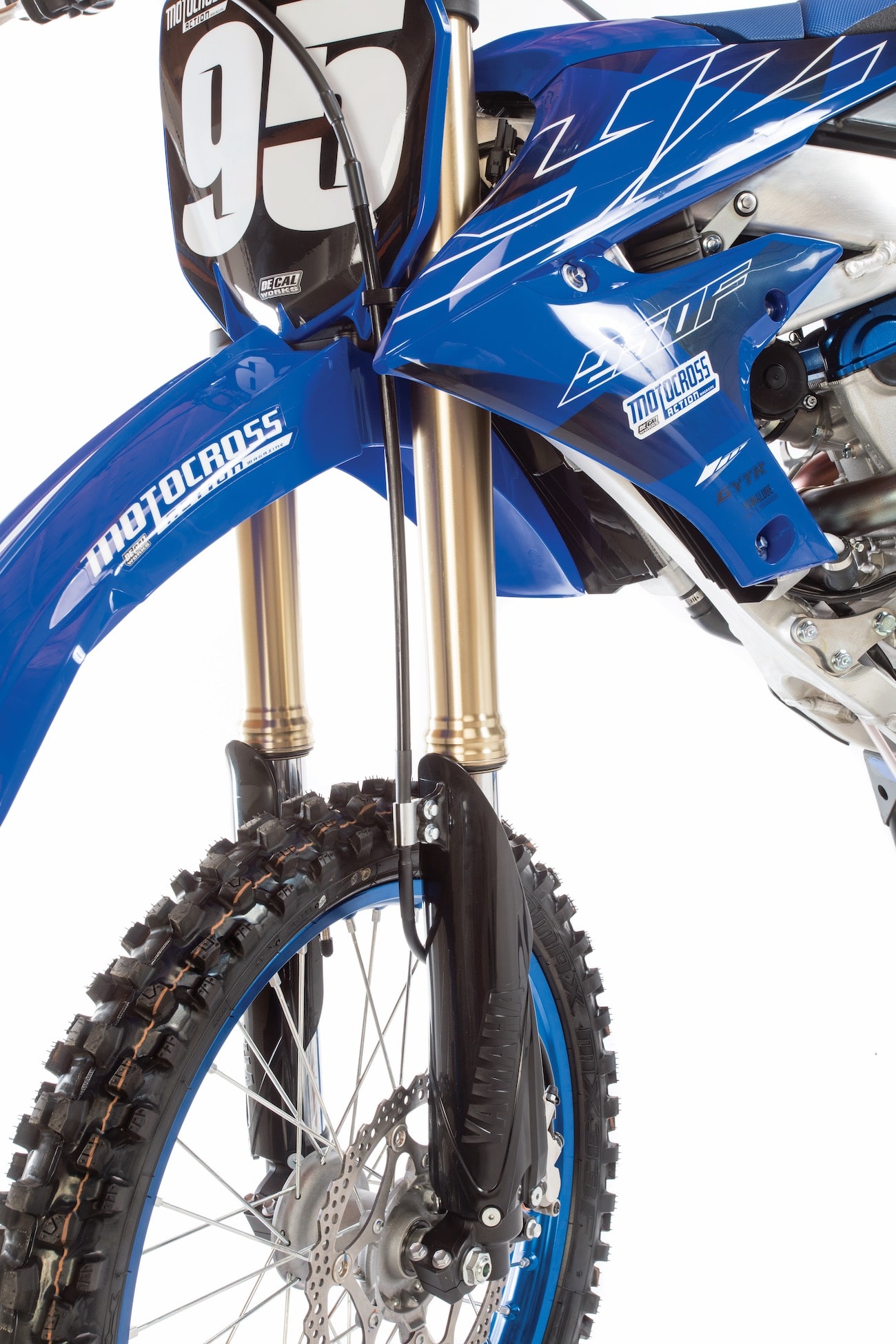
MXA’S 2022 YAMAHA YZ250F SETUP SPECS
This is how we set up our 2022 Yamaha YZ250F for the track. We offer these settings to help steer you in the right direction.
KAYABA SSS FORK SETTINGS
The 2022 Kayaba SSS forks are more tailored towards racers. They don’t dive, but also absorb hard hits without bottoming. The stock compression setting was too stiff for most of our testers. We went six or more clicks out to increase the overall ride comfort as the forks followed through the stroke better. Faster riders kept the stiffer setting, as there was less fore and aft movement. For hardcore racing, we recommend this fork setup for the 2022 Yamaha YZ250F (stock specs are in parentheses):
Spring rate: 4.7 N/mm
Compression: 17 clicks out (10 clicks out)
Rebound: 11 clicks out (7 clicks out)
Fork-leg height: 7mm up
Notes: For lighter riders who aren’t using most of the travel, try going to the lighter 4.6 N/mm springs.
KAYABA SSS SHOCK SETTINGS
This Kayaba shock is the best in the business. The stock settings are in the ballpark for the majority of testers. Testers split between 100mm and 105mm of sag. For hardcore racing, we recommend this shock setup for the 2022 Yamaha YZ250F (stock specs are in parentheses):
Spring rate: 56 N/mm
Race sag: 104mm
Hi-compression: 7/8 of a turn out
Lo-compression: 8 clicks out
Rebound: 10 clicks out
Notes: This is a stiffer spring than two years ago. If you have less than 30mm of free sag, think about going to a softer 55 N/mm spring rate.



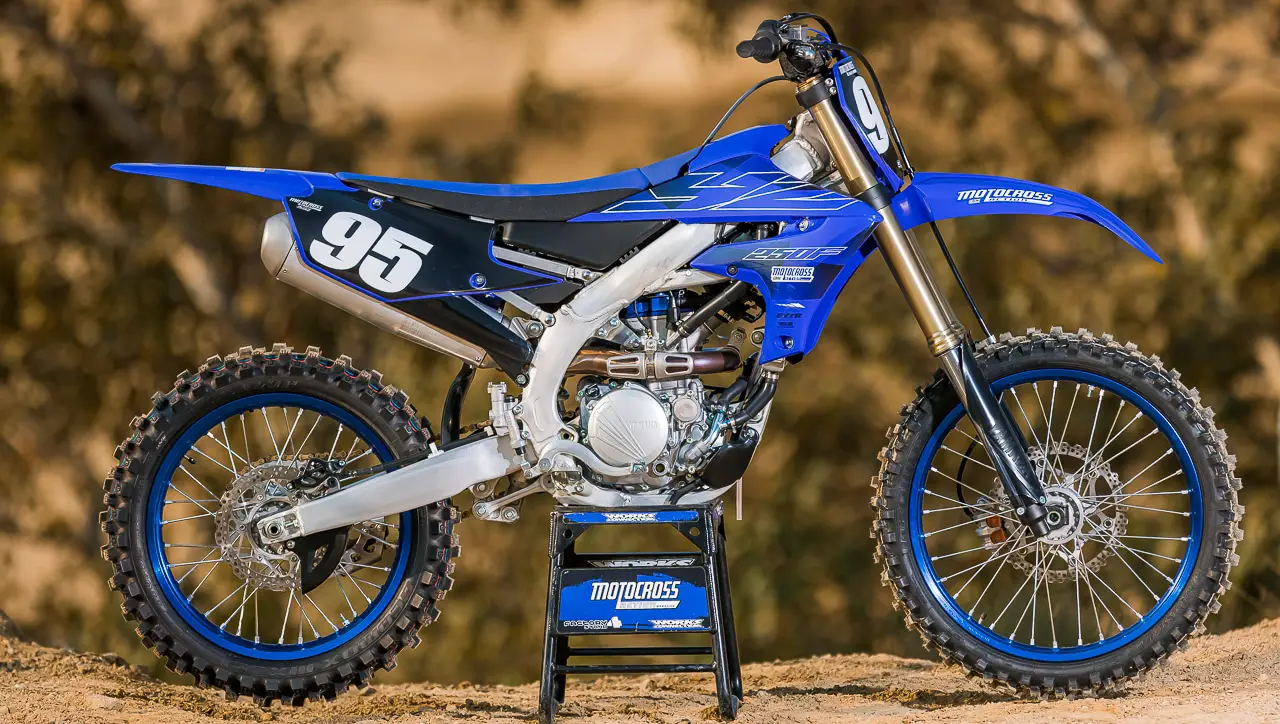
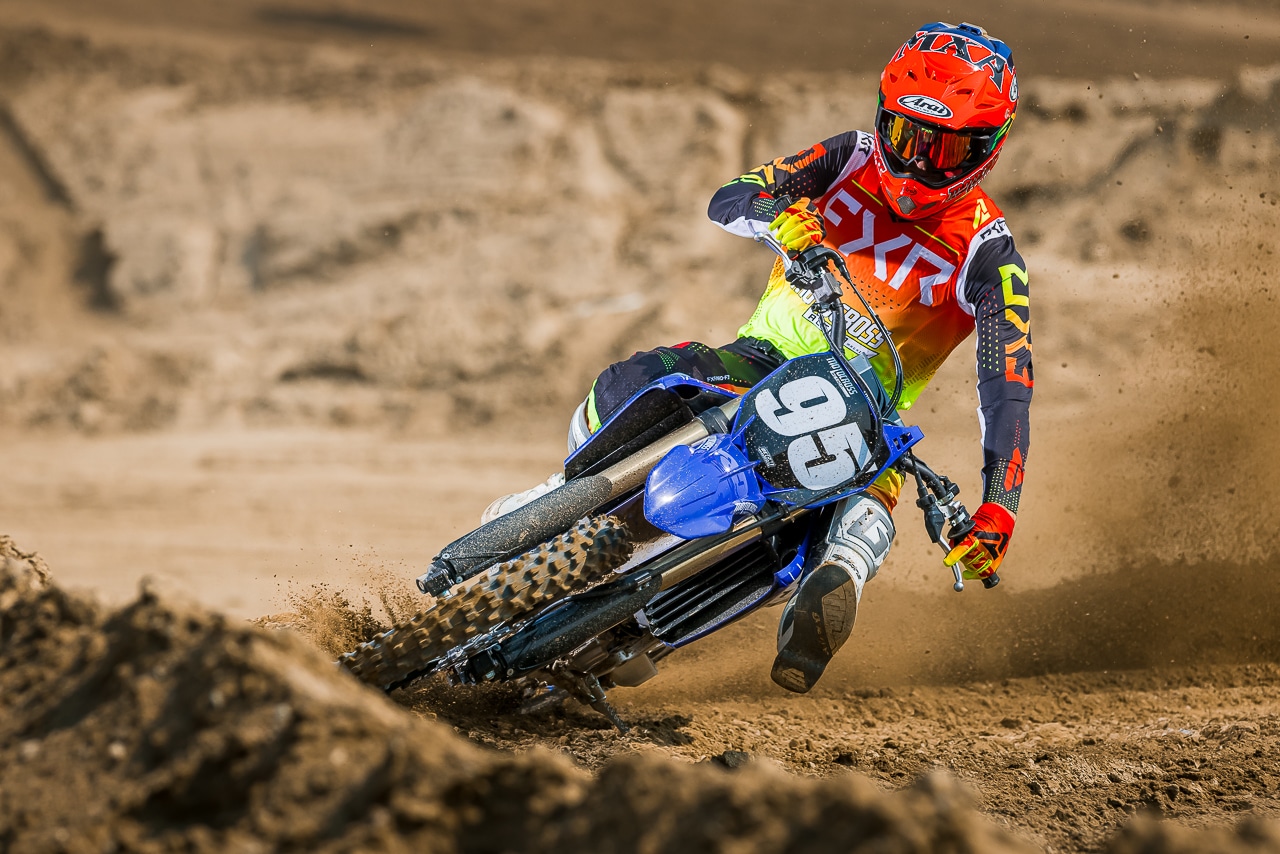

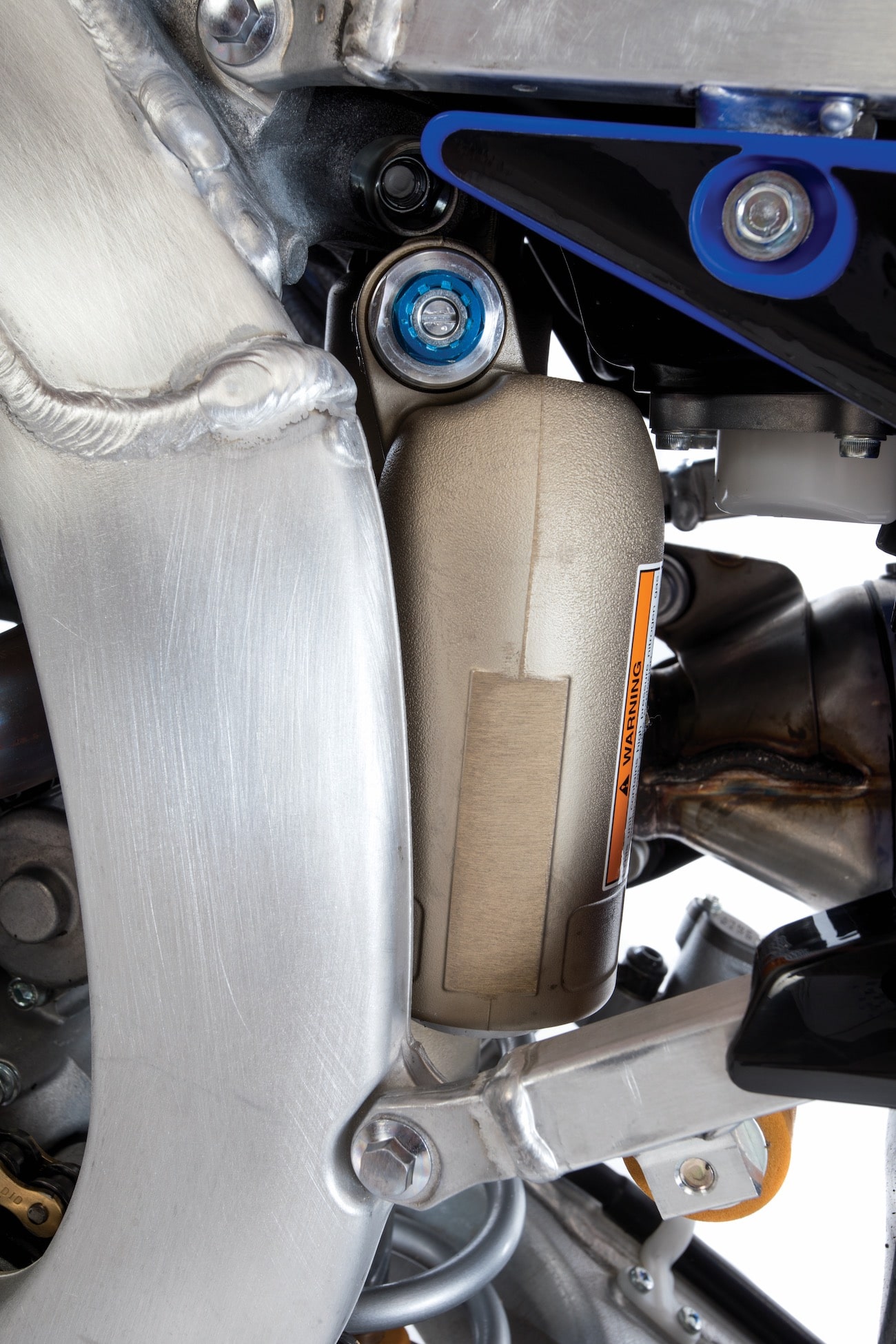



Comments are closed.